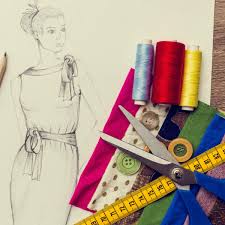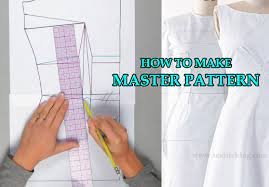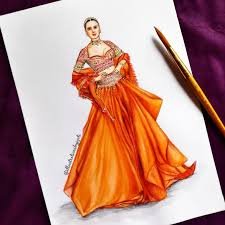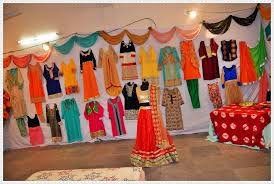What is Fashion Designing? What Should I Do After 12th for Fashion Designing?
Fashion designing is the art of creating designs for clothing, accessories, and other related products, with the aim of creating unique and visually appealing items that are both functional and aesthetically pleasing. The process of fashion designing involves several stages, including conceptualizing and sketching designs, selecting fabrics and materials, creating patterns and prototypes, and overseeing the production and marketing of the final product.
The history of fashion design can be traced back to ancient times when people began to use clothing to express their social status and identity. Throughout the centuries, fashion design has evolved, reflecting changes in culture, technology, and social norms. Today, fashion design is a multibillion-dollar industry that encompasses a wide range of products, from haute couture and designer fashion to mass-produced clothing and accessories.

To become a fashion designer, one needs to have a deep understanding of fashion history, trends, and consumer preferences, as well as an ability to create unique and visually appealing designs. Additionally, fashion designers need to have excellent communication and collaboration skills, as they often work in teams with other designers, pattern makers, and manufacturers.

The first step in fashion design is conceptualizing and sketching designs. This involves researching fashion trends, analyzing consumer preferences, and brainstorming ideas for new designs. Once a designer has a clear idea of what they want to create, they begin sketching their designs, either by hand or using computer-aided design (CAD) software.

Once a designer has sketched their designs, they must select fabrics and materials that will bring their vision to life. This involves researching different types of fabrics, considering factors such as texture, color, durability, and cost. Designers also need to consider the functionality of their designs, such as whether the fabric is appropriate for the intended use of the garment or accessory.
After selecting fabrics and materials, the next step in fashion design is creating patterns and prototypes. This involves creating a blueprint for the design, which serves as a guide for cutting and sewing the fabric. Once the pattern is complete, designers create a prototype of their design, which is used to test the fit, comfort, and overall look of the garment or accessory.

Once a designer is satisfied with their prototype, they oversee the production of the final product. This involves working with manufacturers to ensure that the design is produced according to their specifications and quality standards. Additionally, designers often collaborate with marketers and retailers to develop strategies for promoting and selling their products.
What Should I Do After 12th for Fashion Designing?
If you are passionate about fashion and are interested in pursuing a career in fashion designing after completing your 12th grade, there are several options available for you. Fashion designing is a dynamic and creative field that requires a combination of talent, skill, and formal education. Here are some options that you can consider:

- Pursue a Bachelor’s Degree in Fashion Designing: One of the most popular options is to pursue a Bachelor’s degree in Fashion Designing. There are several universities and colleges in India that offer this course, and the duration of the course is usually 3 to 4 years. Some of the popular courses in this field include B.Design in Fashion Designing, B.Sc in Fashion Designing, and B.Tech in Fashion Designing. The course curriculum typically includes design principles, textile science, garment construction, fashion illustration, fashion merchandising, and business management. You will also have the opportunity to gain hands-on experience through internships and industry projects. Pursuing a Bachelor’s degree in fashion designing can provide you with a strong foundation in the field and prepare you for a range of careers in the fashion industry.
- Pursue a Diploma Course in Fashion Designing: If you do not want to pursue a full-time degree course, you can consider a diploma course in fashion designing. Many institutes offer a one-year or two-year diploma course in fashion designing. These courses are usually more focused on practical skills and can provide you with hands-on training in various aspects of fashion designing. The course curriculum typically includes fashion illustration, garment construction, pattern making, and textiles. Pursuing a diploma course in fashion designing can be a good option if you want to gain practical skills and start your career in the fashion industry at an early stage.
- Pursue a Short-term Course or Workshop: If you want to gain some basic skills in fashion designing, you can consider taking a short-term course or attending a workshop. These courses usually last for a few weeks or months and can provide you with a basic understanding of fashion designing. Some of the topics that are covered in these courses include fashion illustration, garment construction, and textiles. Short-term courses and workshops can be a good option if you want to explore your interest in fashion designing before committing to a longer-term course.
- Pursue an Internship or Apprenticeship: Another option that you can consider is to pursue an internship or apprenticeship with a fashion designer or a fashion house. This can help you gain practical experience in the field and also give you a better understanding of the industry. During the internship, you will work under the guidance of experienced professionals and gain hands-on experience in various aspects of fashion designing. Internships and apprenticeships can be a good way to gain practical experience and build your portfolio.
- Pursue Self-learning: If you have a passion for fashion designing, you can also choose to learn it on your own. There are many online resources available that can help you learn the basics of fashion designing. You can also attend workshops and seminars to enhance your skills.








